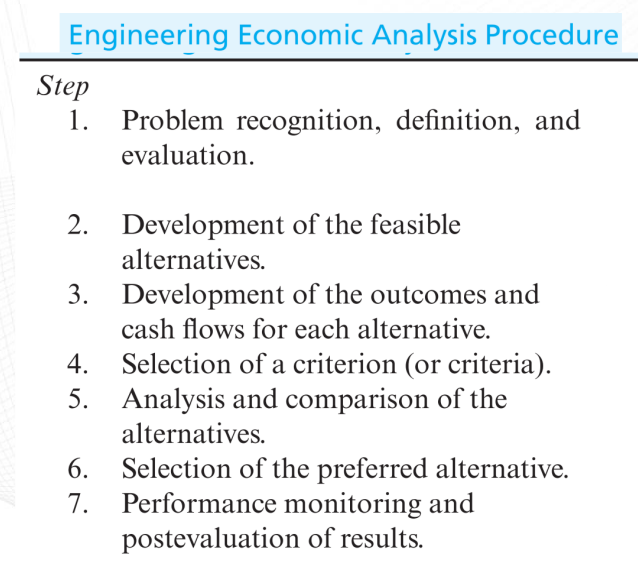You have just moved to a new country to take up a two-year assignment. You need to buy a car and are deciding between a new one that costs $20,000 and a three year-old one that costs $9,000. The used car has an odometer reading of 25,000 miles. You have $10,000 in savings, and can borrow the rest from your company, repaying them 110% after two years. The value of the new car will depreciate by 50% in two years, while that of the used car will depreciate by one-third. What should you do? Use the seven-step procedure to analyze your situation. Attached is the photo of the seven step procedure.
You have just moved to a new country to take up a two-year assignment. You need to buy a car and are deciding between a new one that costs $20,000 and a three year-old one that costs $9,000. The used car has an odometer reading of 25,000 miles. You have $10,000 in savings, and can borrow the rest from your company, repaying them 110% after two years. The value of the new car will depreciate by 50% in two years, while that of the used car will depreciate by one-third. What should you do? Use the seven-step procedure to analyze your situation. Attached is the photo of the seven step procedure.
Engineering Fundamentals: An Introduction to Engineering (MindTap Course List)
5th Edition
ISBN:9781305084766
Author:Saeed Moaveni
Publisher:Saeed Moaveni
Chapter20: Engineering Economics
Section20.8: Excel Financial Functions
Problem 2BYG
Related questions
Question
You have just moved to a new country to take up a two-year assignment. You need to buy a car and are deciding between a new one that costs $20,000 and a three year-old one that costs $9,000. The used car has an odometer reading of 25,000 miles. You have $10,000 in savings, and can borrow the rest from your company, repaying them 110% after two years. The value of the new car will depreciate by 50% in two years, while that of the used car will depreciate by one-third. What should you do? Use the seven-step procedure to analyze your situation. Attached is the photo of the seven step procedure.

Transcribed Image Text:Engineering Economic Analysis Procedure
Step
1. Problem recognition, definition, and
evaluation.
2.
3.
4.
5.
6.
7.
Development of the feasible
alternatives.
Development of the outcomes and
cash flows for each alternative.
Selection of a criterion (or criteria).
Analysis and comparison of the
alternatives.
Selection of the preferred alternative.
Performance monitoring and
postevaluation of results.
Expert Solution
This question has been solved!
Explore an expertly crafted, step-by-step solution for a thorough understanding of key concepts.
Step by step
Solved in 2 steps

Knowledge Booster
Learn more about
Need a deep-dive on the concept behind this application? Look no further. Learn more about this topic, civil-engineering and related others by exploring similar questions and additional content below.Recommended textbooks for you

Engineering Fundamentals: An Introduction to Engi…
Civil Engineering
ISBN:
9781305084766
Author:
Saeed Moaveni
Publisher:
Cengage Learning

Engineering Fundamentals: An Introduction to Engi…
Civil Engineering
ISBN:
9781305084766
Author:
Saeed Moaveni
Publisher:
Cengage Learning